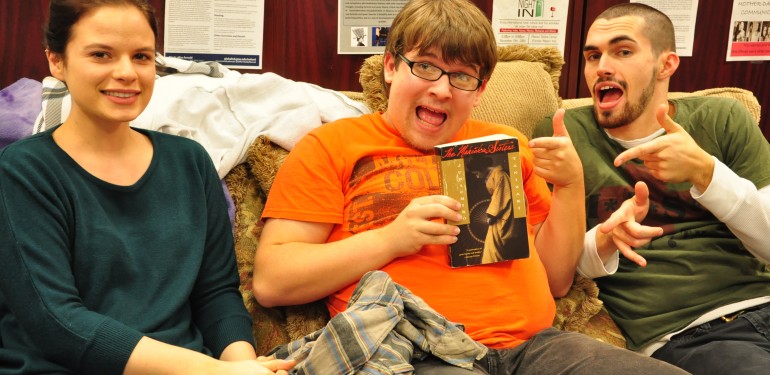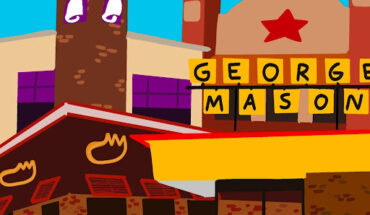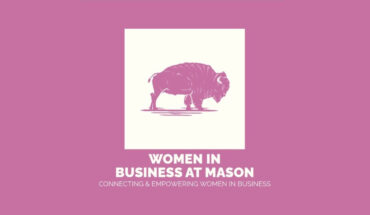Ashley Anne Strobridge, staff writer
Every Wednesday, a small but engaged group of Mason students and alumni meet to discuss a topic that for many goes unnoticed.
The book club, Men Who Write About Women, aims to dissect the idea of how men portray women in literature. They look to explore what it means to have stories about women created by men.
Are these portrayals accurate representations of the complexity of the human experience, or do they fall back on gender stereotypes?
Women and Gender Studies Center employee and organizer of the book club, David Corwin, states that in much of the material they are reading “they either portray the women as highly sexualized or powerless.”
This reflects the duality that is seen in much of the media portrayals of women even today. Many representations of women swing back and forth between the Madonna or the whore, with many women in reality struggling with theses binary labels thrust upon them by society’s expectations.
There is also the problem of dominance in who gets to be the lead character in stories. According to Corwin, many female characters in the books they read are “in the backdrop” and are not really fleshed out or complex.
This was especially true in two of the short stories they read, “Chrysanthemums,” by D.H. Lawrence, and “Winter Dreams,” by F. Scott Fitzgerald. According to Corwin, these portrayals were not unexpected given the time period the stories were written, which was in the early 20th century.
One exception to this rule was “The Makioka Sisters,” by Jun’ichiro Tanizaki. The book set in World War II Japan and has complex female main characters.
This could perhaps be a reflection of the “Rosie the Riveter” era of the 1940s decade in which the book was written. Corwin also stated that now that they are reading more contemporary authors, the portrayals of women are markedly more progressive.
However, even though to some observers we have come a long way in the media’s portrayals of women, does that duality of strong vixen vs weak damsel in distress still exist? And the big question is, are male visions of women still the visions we see today in the media? According to recent studies, the answer to that second question is a resounding yes.
Celluloid Ceiling 2013 Report found women comprised only 16% of all directors and writers of films. Moreover, the Geena Davis Institute on Gender in Media reports that only 13% of the family films in this U.S. are written by women.
It is difficult to get the statistics on how many female versus male authors there are. National Public Radio reviewed statistics by VIDA, a women’s literary organization, and found about 75% of book reviewers in the U.S. and the U.K. are men. Then they review books written by male authors.
With male authors getting a majority of the publicity, it can be assumed that men get more of the readership as well. Finding statistics on how sex sells more books are difficult to come by, but according to the feminist site Jezebel, studies show that male authors sell more books than female authors.
150 years after the Bronte sisters changed their name to the Bell Brothers to sell more books, women are still using pseudonyms and initials to avoid the extra scrutiny. J.K Rowling is a well-known present example.
So what does that mean for the portrayals of women in the media? Even in the 21st century, men are still the dominant voice in how women are portrayed in the media, whether through TV, film or literature.
The Men Who Write about Women reading group opens the Mason community to an opportunity to discuss these topics in a safe environment.
Despite the potentially controversial topics being discussed in the reading group, Mason student Jane Garfinkel comments, “I really likes how relaxed it is. I’m being encouraged to read short stories and poems that I would have never read on my own, but I don’t have to come in and impress anyone with my unique interpretation of the story. At this point it just feels like friends chatting.”
Corwin concurs that “everyone is very respectful.”
“The reading group has been a lot of fun–tangential, but fun nonetheless. David picked global novels, short stories and poems that represent a more diverse collection than what [he is] used to reading,” said Mason alumni Michael Moratto.
The reading group is dynamic in many ways. It explores a number of ideas from what it means for men to represent women, to exposing students to a new world of reading material, and through that, a new vision of the world.
The Men Who Write About Women Reading Group will be followed up next semester by the Women Writers of the 20th Century Reading Group, which will “focus on British, American, Post-colonial, and other international authors,” Corwin said.
Photo credit: Johannah Tubalado




